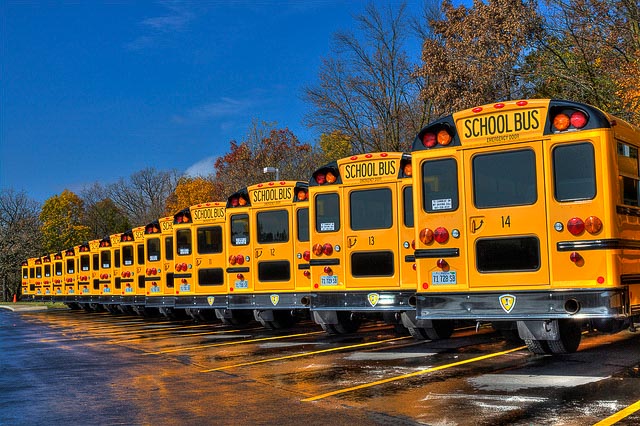In 2012, residents of Satsuma, Alabama, north of Mobile, voted to separate from the Mobile County School District and form their own district, following two other small cities that left the county district as well. The median household income of the newly separated island of territory in Satsuma was nearly $16,000 higher than that of the county district it separated from, according to a new report from the education non-profit EdBuild.
Since 2000, some 71 communities have tried to secede from their public school districts, according to "Fractured: The Breakdown of America’s School Districts." More than half of those communities were successful. This tactic, which often sees wealthier, whiter communities split from the larger public school district, has become increasingly possible thanks to a shift in court rulings and policy.
For years, following the Brown v. Board of Education ruling in 1954, the courts struggled with communities that looked for opportunities to protect segregation, including through secession. "But a landmark 1974 ruling by the United States Supreme Court reversed this trend," notes the report, citing the Milliken v. Bradley decision that said that segregation remedies could reach beyond a school district's boundaries, effectively protecting the whiter, wealthier suburban school districts that had developed around many of cities.
The analysis turns to three communities, including Memphis' Shelby County School District. Six separate largely white suburban communities split from the county school district in 2014. Memphis schools resisted integration and when busing began as an attempt to force the schools to do so, white families moved away. "By 1974, more than 30,000 students had left the Memphis public schools, and Memphis had the largest private-school system in the country," wrote John Branston in Memphis magazine.
"Eventually," the EdBuild report writes, "Memphis City Schools served a student population that was almost 93 percent nonwhite. It was surrounded by Shelby County Schools, a separate district where the student population was just over half white and where the median family income was more than double that of Memphis." But even then, the separate districts shared the revenue from a single countywide tax. That would be the next fight. The legislature, bending the suburban districts, did away with a state ban on new districts and paved the way for the six districts to secede.
Thanks to the reversal from the legislature, more Tennessee communities pursued secession. Meanwhile, the Memphis city schools faced budget cuts, school closures and layoffs with reduced revenues.
Secession, the report argues, often not only creates a costly duplication of bureaucracies but also hurts the mission of public education to equitably serve all students. "There is no doubt that a splintered school system of haves and have-nots today lays the groundwork for a fractured society in the future," the report writes. Only a handful of states require districts to evaluate the financial or demographic impact of secession. Texas is actually one of the states that requires voter approval by the community the new district is seeking to secede from with at least 25 percent voter turnout.
Private schools, particularly in the South, have also helped effectively keep schools segregated. "From the mid-1960s to 1980," writes the Southern Education Foundation, "as public schools in the Deep South began to slowly desegregate through federal court orders, private school enrollment increased by more than 200,000 students across the region." And white students are overrepresented in the private school population across the country but, again, particularly in the South.
Other research has pointed to how segregation has grown between school districts rather than within a single district over the years.

